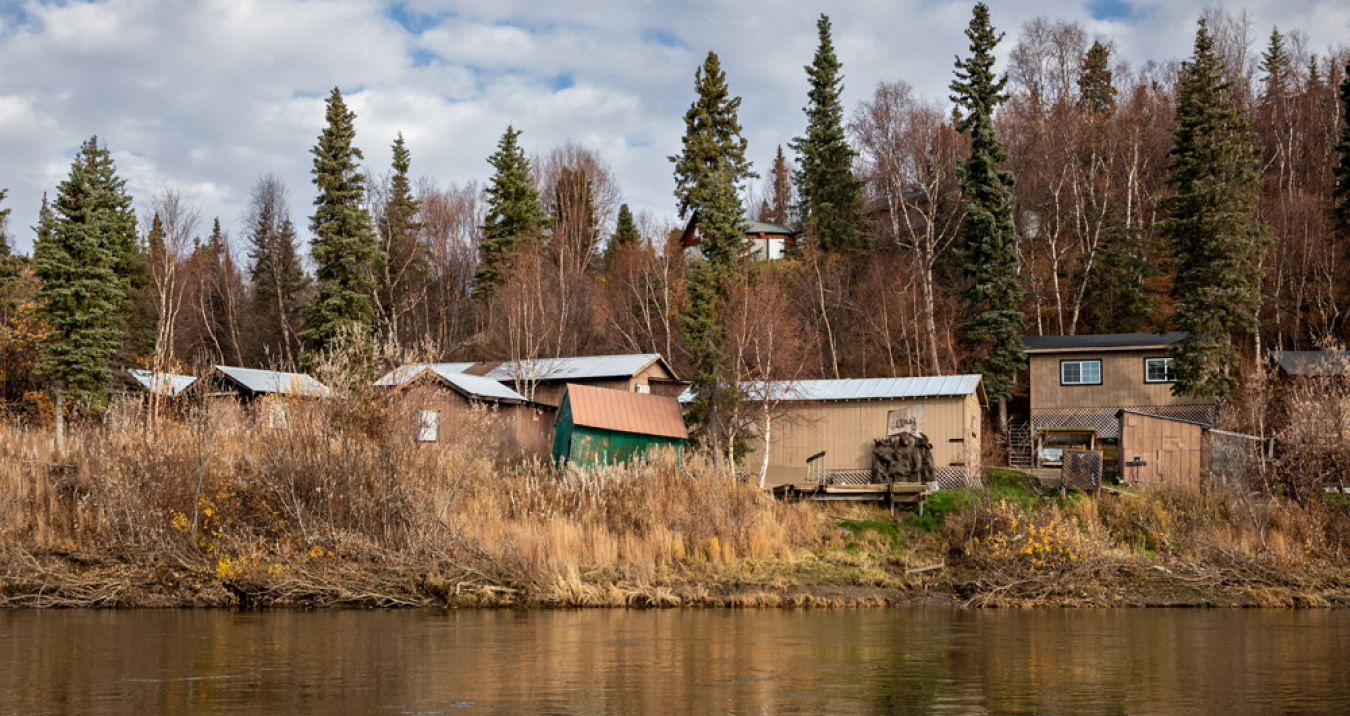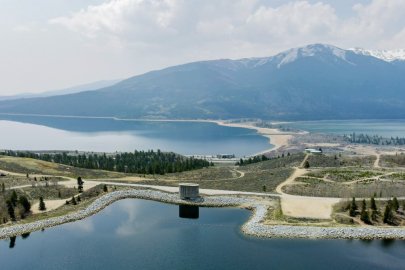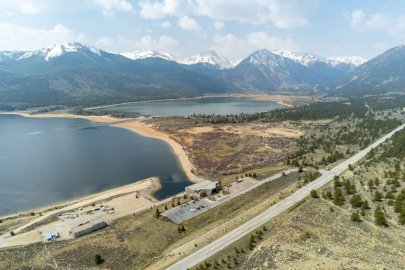New study identified more than 1,800 sites in Alaska where the state could develop pumped storage hydropower projects to help support its transition to clean energy.
Water Power Technologies Office
March 14, 2024Hydropower Program
Grid Reliability, Resilience, & Integration (HydroWIRES)
Project Name: Prospects for Pumped Storage Hydropower in Alaska
Project Team: Argonne National Laboratory (lead) and National Renewable Energy Laboratory
Lead Recipient Location: Lemont, Illinois

Scientists at Argonne National Laboratory led a study to investigate whether pumped storage hydropower (PSH) could help Alaska add more clean, renewable energy into its power grid. The team, which included experts from the National Renewable Energy Laboratory (NREL), identified about 1,800 sites in Alaska that could be suitable for a more sustainable kind of PSH, called closed-loop PSH, as well as many more sites that could host other forms of PSH.
Alaska is warming faster than any other state, according to the U.S. Department of Agriculture. Although most Alaskans get their energy from the state’s two largest power systems (the Railbelt and Southeast Alaska), more than 150 isolated communities rely on smaller systems that operate like microgrids. Many of these remote communities primarily rely on diesel fuel to generate electricity, which can be expensive due to high fuel and transportation costs. But PSH plants, which can store energy for up to 10 hours or more, could help the state transition to clean energy, reduce its high energy costs, and maintain resilient and reliable power systems. That's why the multi-laboratory team set out to understand how and where the state could construct new PSH facilities and how those facilities could support Alaska's energy needs.

Alaska's Railbelt power system, which serves most of the state's population, gets about 80% of its energy from natural gas. Now, a new study could help the system smoothly transition to clean energy.
To launch their study, the research team first mapped out locations that could host PSH plants. These facilities depend on two reservoirs positioned at different elevations. To store clean energy, the plant pumps water into the higher reservoir. When energy is needed, water is released and flows back down, spinning turbines and generating electricity. Because the team identified more than 1,800 sites with the necessary geography, their findings demonstrate that Alaska has huge potential to develop more of these energy storage facilities to support a clean and resilient power system.
Argonne scientists also evaluated whether PSH could support Alaska's largest power system, the Railbelt, which gets about 80% of its energy from natural gas. The team developed a grid integration model to evaluate how the Railbelt might handle an influx of clean energy and discovered the future power system will need both long- and short-term energy storage. While batteries could provide short-term storage, the team also found that the long-term storage offered by PSH facilities could help integrate more variable renewable resources, like wind energy and solar power, into the grid and ensure it remains reliable even during periods when wind and solar energy resources wane.

Researchers from NREL also developed a model to evaluate how PSH facilities might serve remote Alaska communities that rely on isolated microgrids. With their model, the team identified 18 communities that could benefit from small PSH facilities. However, because PSH development can come with high up-front costs, batteries may be a more economical energy storage option for some of these communities, according to the study.
Going forward, the team's findings could help guide Alaska communities as they select which investments to make to achieve their clean energy goals and reduce both energy costs and greenhouse gas emissions.
-
 A new map and web tool helps hydropower stakeholders understand how the Inflation Reduction Act's investment tax credits can be used to develop pumped storage hydropower projects across the United States.
A new map and web tool helps hydropower stakeholders understand how the Inflation Reduction Act's investment tax credits can be used to develop pumped storage hydropower projects across the United States. -
 Two national laboratories issued three publications that analyze how hydropower's value is likely to increase as the United States transitions to a clean energy grid.
Two national laboratories issued three publications that analyze how hydropower's value is likely to increase as the United States transitions to a clean energy grid. -
 Idaho National Laboratory, working with Fall River Electric Cooperative, demonstrated how the new Microgrid in a Box can strengthen small hydropower plants’ abilities to help electric grids recover after a blackout or power disturbance.
Idaho National Laboratory, working with Fall River Electric Cooperative, demonstrated how the new Microgrid in a Box can strengthen small hydropower plants’ abilities to help electric grids recover after a blackout or power disturbance. -
 New study identified more than 1,800 sites in Alaska where the state could develop pumped storage hydropower projects to help support its transition to clean energy.
New study identified more than 1,800 sites in Alaska where the state could develop pumped storage hydropower projects to help support its transition to clean energy. -
 Researchers analyzed the life cycle greenhouse gas impacts of energy storage technologies and found that pumped storage hydropower has the lowest global warming potential on average.
Researchers analyzed the life cycle greenhouse gas impacts of energy storage technologies and found that pumped storage hydropower has the lowest global warming potential on average. -
 National laboratory report can improve decision-making on linings used at pumped storage hydropower facilities, which can help make these facilities more resilient and strengthen their benefits to the grid.
National laboratory report can improve decision-making on linings used at pumped storage hydropower facilities, which can help make these facilities more resilient and strengthen their benefits to the grid.
WPTO's hydropower e-newsletter features news on R&D and applied science to advance sustainable hydropower and pumped-storage technologies.
The WPTO e-newsletter brings funding opportunities, events, publications, & hydropower and marine energy updates directly to your inbox.


